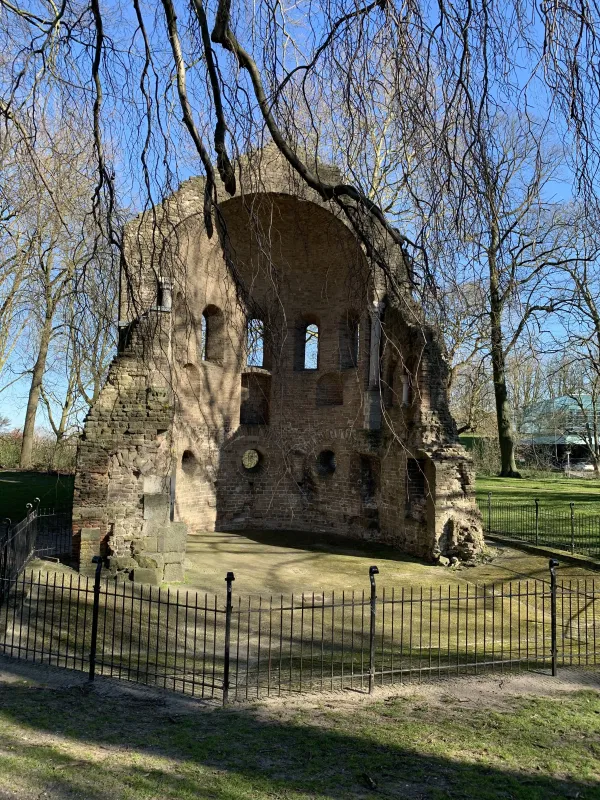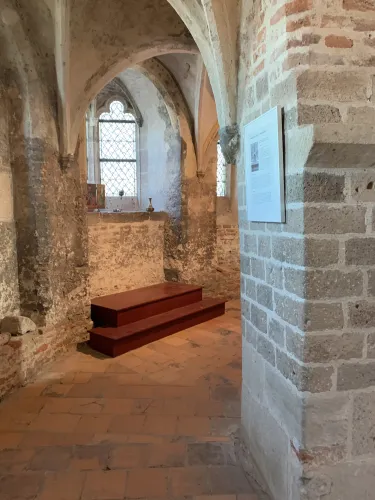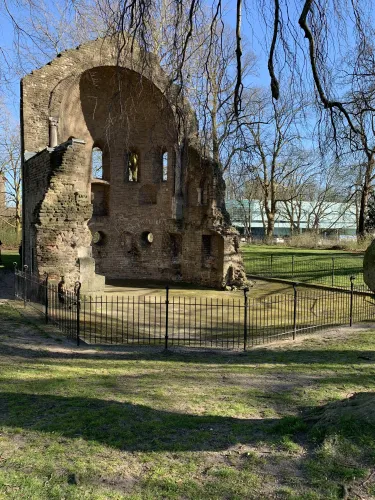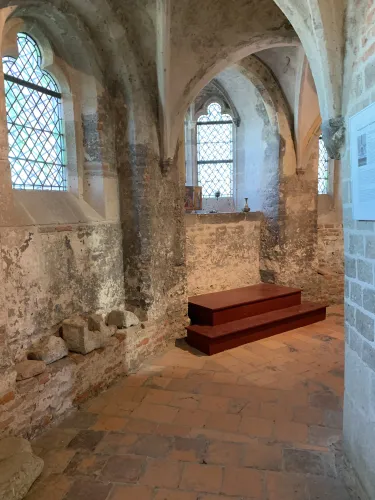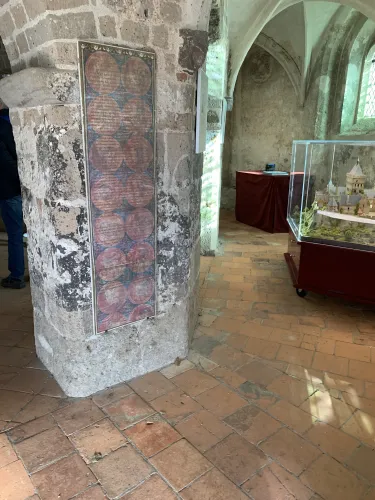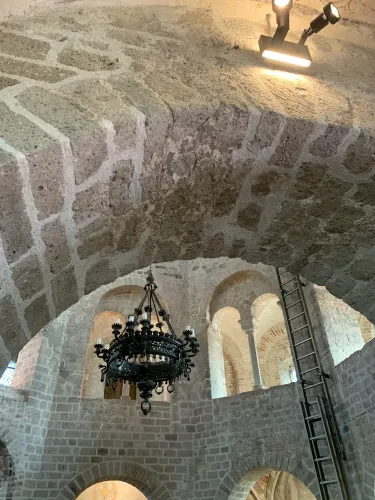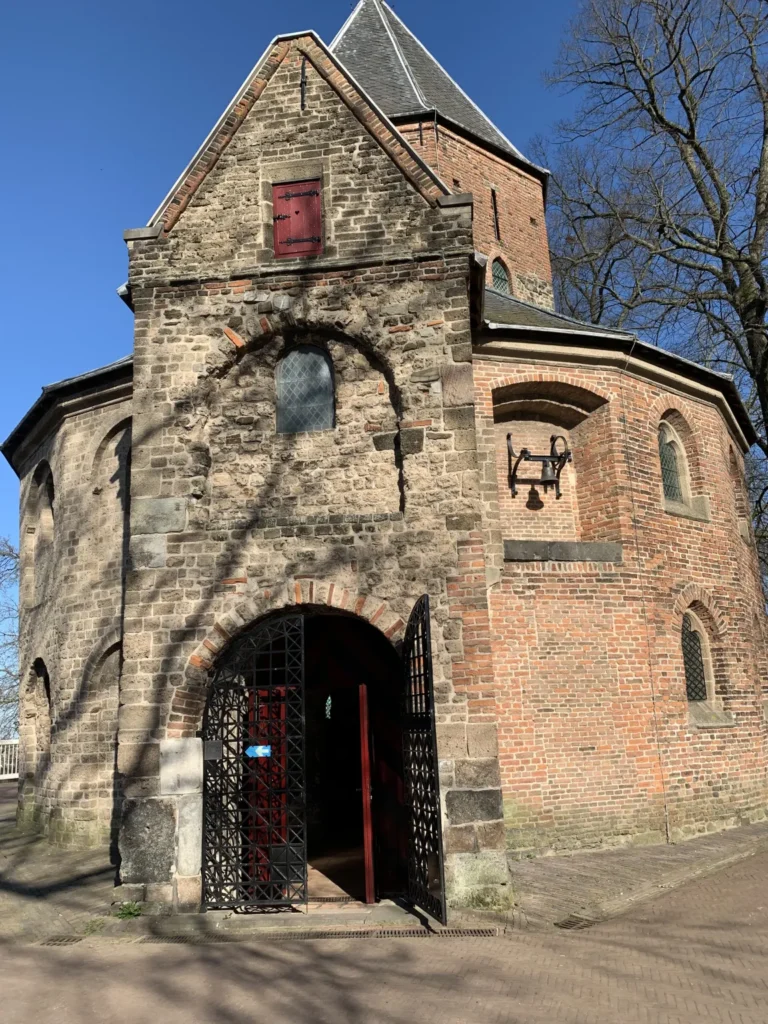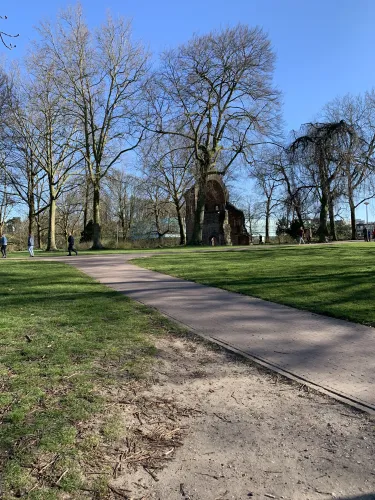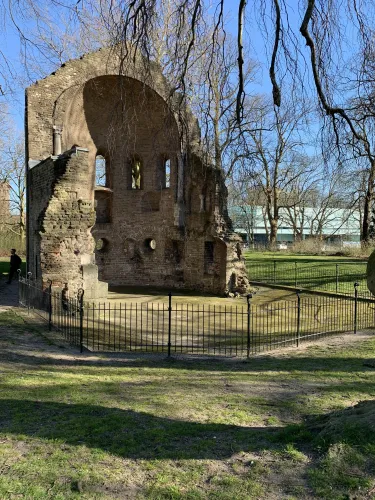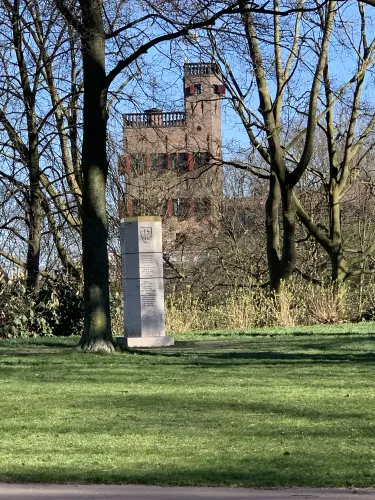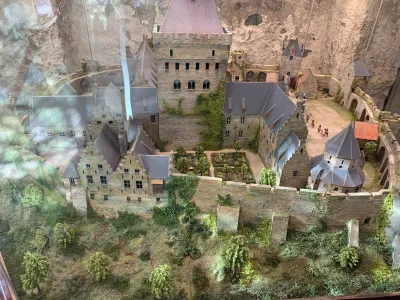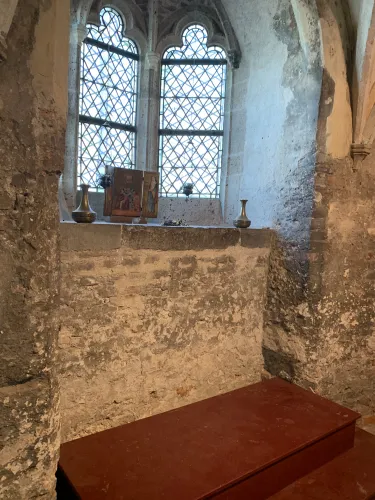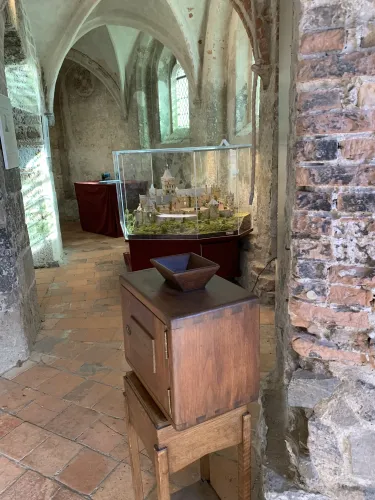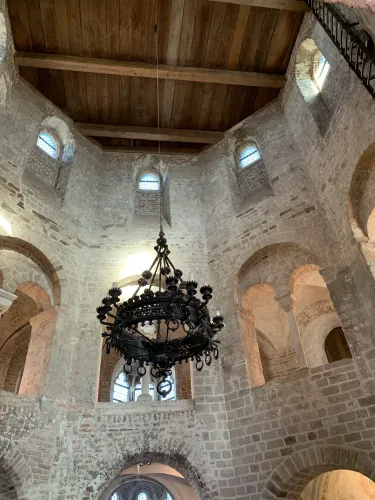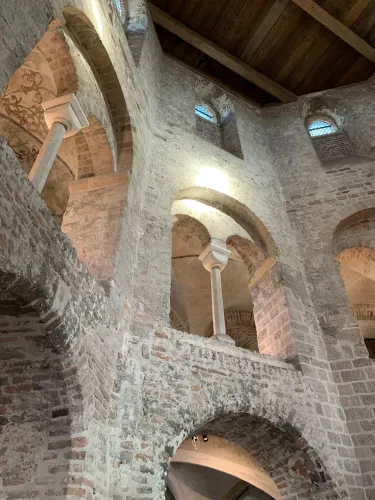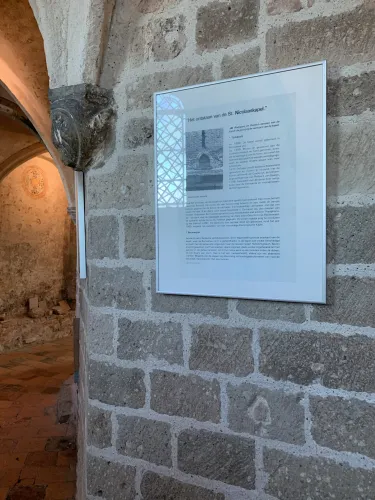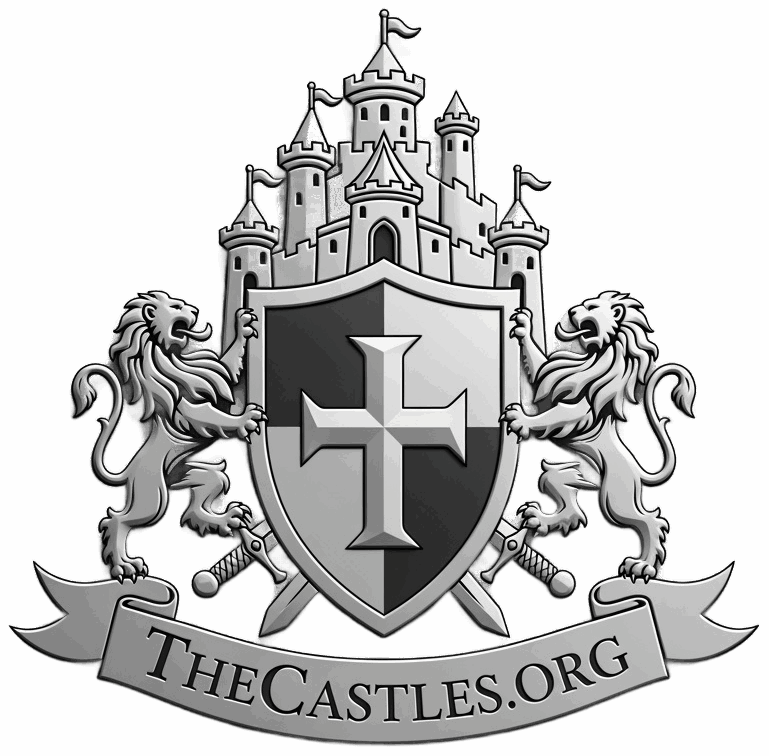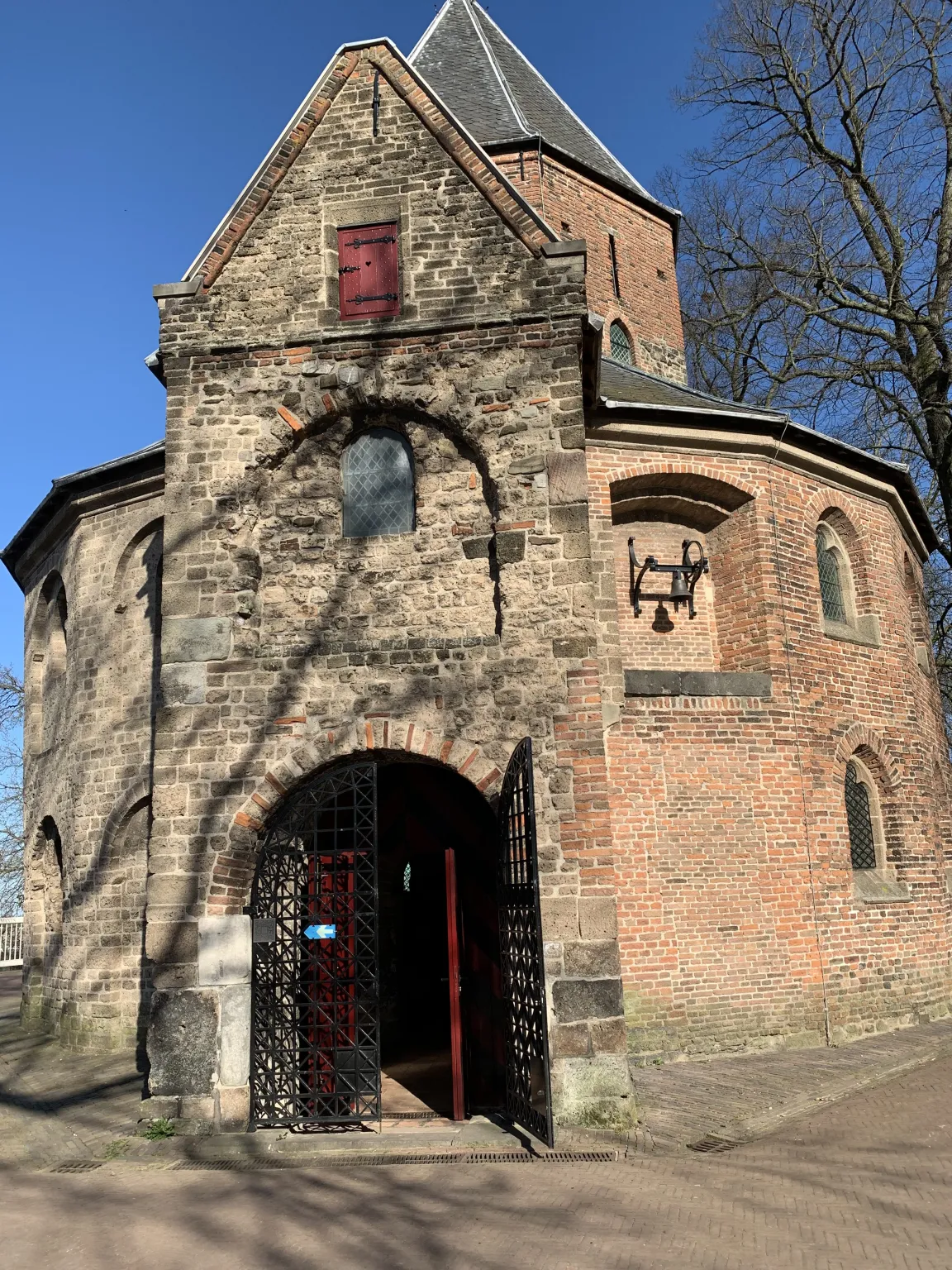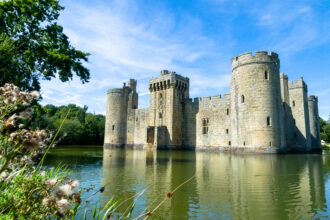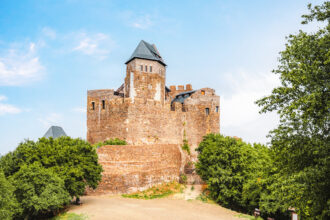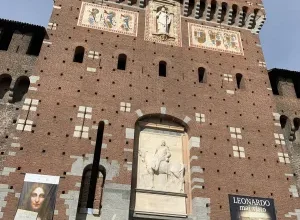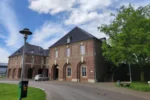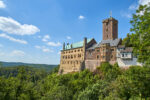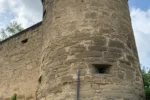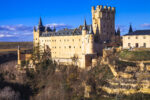The oldest city in the Netherlands is Nijmegen, where the Romans built their fortress on the 35-metre-high Valkhofheuvel, a hill high above the Waal. In 777, Charlemagne had a palace built on this Roman settlement, which became a popular residence for Charlemagne’s powerful royal family in the 8th and 9th centuries. However, the castle complex was set on fire by the Vikings after they had spent the winter there in 881. It was not until Emperor Frederick I Barbarossa that the castle was rebuilt and completed in 1155. It once had a huge residential tower, which, together with St. Stephen’s Church on the other side, had a decisive influence on the cityscape of Nijmegen. This imposing castle complex was called Valkhof because falcons were kept in the castle’s forecourt. After Frederick I Barbarossa, the palace passed into the possession of the counts and dukes of Geldern. In the course of the French Revolution, the Valkhof was razed to the ground, so that only the Barbarossa ruins and St. Nicholas Chapel remain of what was once the largest and oldest castle in the Netherlands. Both national monuments are located in the romantic Valkhof Park on the outskirts of Nijmegen city centre. The Barbarossa Ruins, also known as Sint Maartenkapel, were built under Frederick I Barbarossa, one of the most powerful men in Europe. This castle chapel, dedicated to St. Martin, housed the Imperial Hall, where all ceremonial meetings took place and where the emperor’s throne, crown, sceptre and orb were kept. Today, all that remains of this magnificent castle chapel, which consisted of an upper and lower floor and had access to the crypt on the left, is a semicircular room, the Romanesque apse. Not far from it, on the west side of Valkhof Park, lies St. Nicholas Chapel, popularly known as Valkhof Chapel. This chapel is the oldest preserved building in the city and also one of the oldest existing stone buildings in the Netherlands. Due to its octagonal central section, which is bordered by a sixteen-sided ambulatory, it is strongly reminiscent of Aachen Cathedral, which is why the construction of St. Nicholas Chapel has been dated earlier. According to the latest findings, its builder was Emperor Otto III, who had the chapel built between 994 and 1002 in honour of his deceased mother Theophanu, a Byzantine princess, and dedicated it to Saint Nicholas, a popular saint from his mother’s homeland. A massive chandelier hangs in the centre of the small chapel and medieval frescoes can be seen on some of the walls. Next to the chapel entrance, on the right-hand side, there is a model of the former castle complex behind a glass display case. Behind the chapel, part of the castle’s defensive wall can still be seen, offering a magnificent view over Nijmegen’s marina, Lindberghaven, as well as the Waal, the Waal Bridge and the Nationaal Fietsmuseum Velorama, the only bicycle museum in the Netherlands. Valkhof Park, the oldest part of Nijmegen, not only offers culture with its two national monuments, but also pure relaxation in the midst of nature thanks to its beautiful green spaces.
